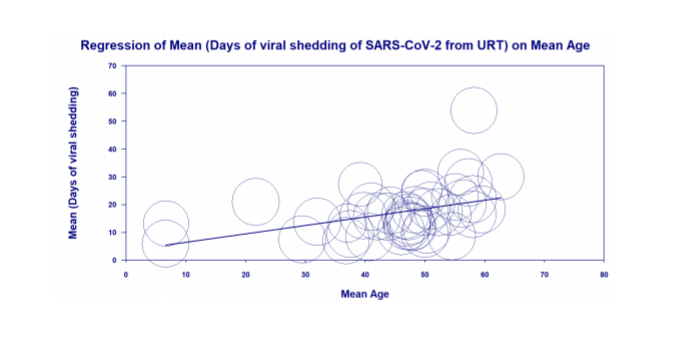SARS-CoV-2: a living systematic review and meta-analysis
Published: 27 August 2020
Researchers at the Institute's CVR and the University of St Andrews have conducted a systematic review of published and pre-print studies that have investigated the dynamics and length of virus shedding in SARS-CoV-2, as well as similar coronaviruses that caused Severe Acute Respiratory Syndrome (SARS) and Middle East Respiratory Syndrome (MERS).

Researchers at the Institute's Centre for Virus Research (CVR) and the University of St Andrews conducted a systematic review of published and pre-print studies that have investigated the dynamics and length of virus shedding in SARS-CoV-2, as well as similar coronaviruses that caused Severe Acute Respiratory Syndrome (SARS) and Middle East Respiratory Syndrome (MERS).
Data compiled from 79 studies on SARS-CoV-2 found that RNA, the genetic material of the virus, was detectable in throat swabs for an average of 17 days from symptom onset, and for up to 83 days.
Shedding duration increases with age as well as with severity of illness. However, it is important to note that the SARS-CoV-2 PCR test is very sensitive, and can detect non-viable genetic material. Studies that attempted to culture viable virus from clinical samples were not successful beyond day nine.
Dr Antonia Ho, Clinical Senior Lecturer at the CVR and senior author of the paper, said: “Although laboratory conditions do not necessarily mimic real life transmission conditions, an important message is that detection of viral RNA does not mean that a patient is infectious.
"Studies to date have not been able to grow the virus beyond nine days after symptoms begin, even though virus is detectable in the nose, throat and stool for much longer.”
The review also found that SARS-CoV-2 viral load appears to peak in the nose and throat in the first week of illness, particularly from the time of symptom onset to day five. In contrast, peaks in SARS-CoV-1 and MERS-CoV viral load occurred later (7-14 days).
Furthermore, viral loads at the start of infection appear to be comparable in asymptomatic and symptomatic patients, though most studies have demonstrated faster viral clearance in asymptomatic individuals. This suggests that asymptomatic individuals may be similarly infectious at the onset of infection, but for a shorter period.
Dr Ho concluded: "Our findings highlight the importance of prompt testing and isolation, as many people are beyond their most infectious period by the time they are tested.
"Hence, those who suspect they may be ill should self-isolate immediately. As new data are emerging daily, we aim to publish this as a living review which the team will update periodically."
SARS-CoV-2, SARS-CoV-1 and MERS-CoV viral load dynamics, duration of viral shedding and infectiousness: a living systematic review and meta-analysis
- Muge Cevik, Matthew Tate, Oliver Lloyd, Alberto Enrico Maraolo, Jenna Schafers, Antonia Ho
- Doi: https://doi.org/10.1101/2020.07.25.20162107
First published: 27 August 2020

